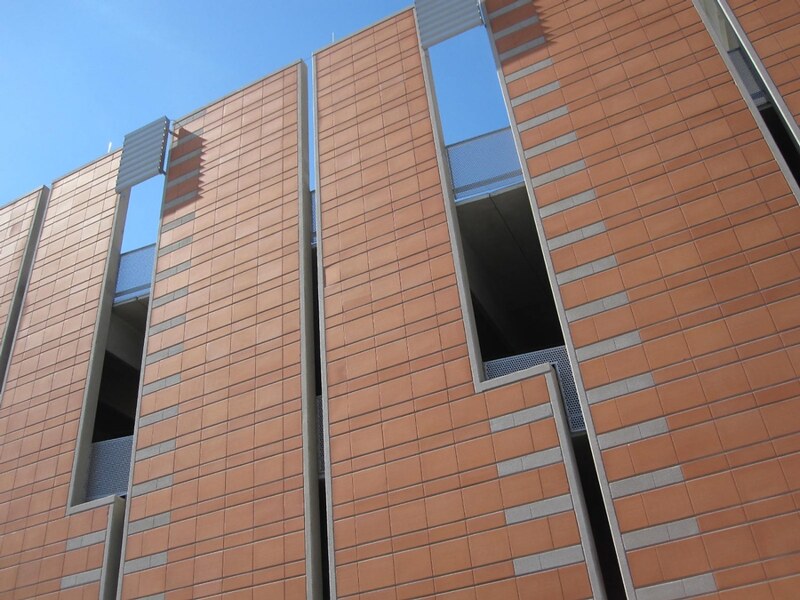
The resurgence of terracotta cladding in modern architecture is a testament to its enduring appeal. Its natural beauty, coupled with its robust and sustainable qualities, makes it a preferred choice for architects aiming to create buildings that resonate with both aesthetic and environmental consciousness. The integration of Hytect technology further elevates terracotta’s functionality, addressing the critical aspect of indoor air quality and hygiene.
The Natural Beauty and Performance of Terracotta
Terracotta’s inherent charm lies in its natural, earthy tones and textures, providing a warmth and character that synthetic materials struggle to replicate. Its durability ensures longevity, while its thermal mass contributes to energy efficiency, reducing the need for excessive heating and cooling. As Marshall Walters, CEO of Architectural Polymers, states, “The evolution of terracotta cladding, incorporating advanced solutions like Hytect, signifies a pivotal shift towards buildings that prioritize occupant health and environmental sustainability without compromising on aesthetic appeal.”
The Energy-Efficiency Challenge in Modern Buildings
The imperative for energy-efficient building practices has led to the widespread adoption of airtight building shells and insulation. While these measures reduce energy consumption, they also result in reduced air exchange, leading to higher concentrations of indoor pollutants. These pollutants, emanating from various sources like carpets, furniture, and cleaning agents, can negatively impact occupant health. This is where Hytect technology provides a crucial solution.
What Is Hytect Technology?
Developed through a collaboration with the Fraunhofer Institute, Hytect involves baking titanium dioxide (TiO₂) onto the ceramic surface of terracotta tiles. This process transforms the surface into a hydrophilic, antibacterial, and air-purifying material.
How Hytect Works: The Science of Photocatalysis
The technology works via photocatalysis, where light activates the TiO₂ to decompose organic substances into harmless CO₂ and water. This continuous, light-driven reaction allows Hytect surfaces to remain active for the entire lifespan of the building.
Three Key Benefits of Hytect-Coated Terracotta
- Antibacterial Protection: Eliminates bacteria such as coliforms and MRSA without chemical agents.
- Self-Cleaning Action: The hydrophilic surface allows water to lift away dirt naturally.
- Air Purification: Decomposes pollutants like formaldehyde, car exhaust particles, and industrial emissions.
Improving Indoor Air Quality and Human Health
With people spending nearly 90% of their time indoors (Sentinel Haus Institut, 2014), maintaining healthy indoor air is crucial. Hytect technology addresses this need by mitigating the side effects of energy-efficient construction and promoting cleaner, fresher indoor environments.
Ideal Applications for Hytect-Coated Terracotta
Hytect’s properties make it especially beneficial for spaces demanding high hygiene and air quality standards, including:
- Bathrooms and sanitary facilities
-
Catering and food service areas
-
Swimming pools and wellness centers
-
Medical and healthcare facilities
-
Exterior building facades
Long-Term Environmental and Economic Advantages
The long-term advantages of using Hytect-coated terracotta extend beyond immediate health benefits. The durability of terracotta, combined with the self-cleaning and air-purifying properties of Hytect, reduces maintenance requirements and cleaning costs, leading to significant environmental and economic benefits. The continuous, non-depleting nature of the photocatalytic process ensures that the technology remains effective throughout the building’s lifecycle.
Tradition Meets Technology in Sustainable Design
In conclusion, terracotta cladding, enhanced by Hytect technology, represents a sustainable and innovative approach to modern architecture. By combining the natural beauty and durability of terracotta with the advanced air-purifying and self-cleaning properties of Hytect, architects can create buildings that are not only visually appealing but also conducive to the health and well-being of their occupants. This synergy of tradition and technology positions terracotta cladding as a leading choice for contemporary and future architectural projects.